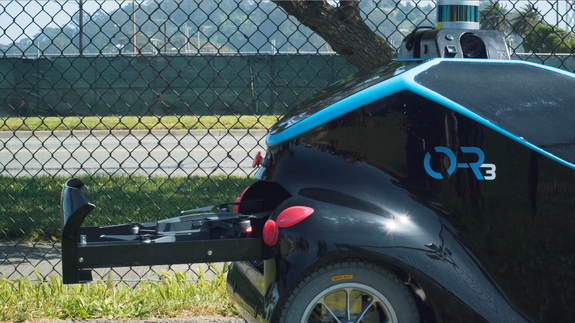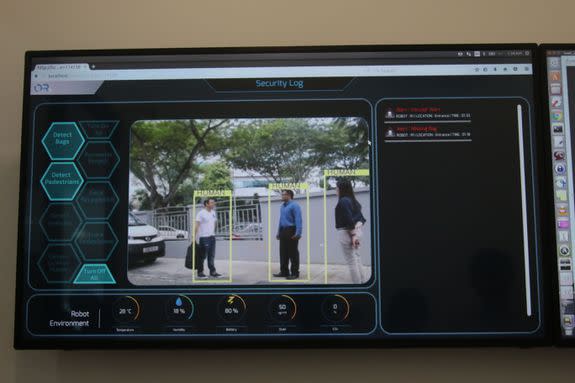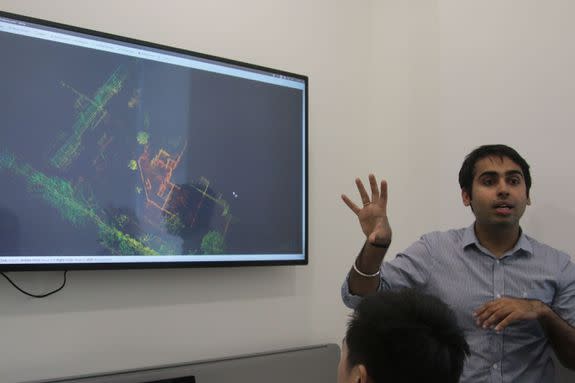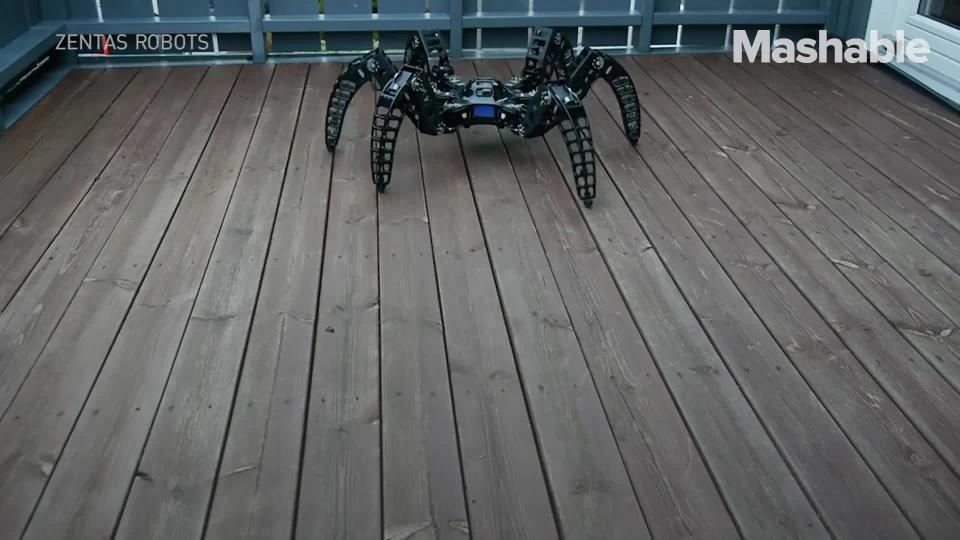Autonomous robot security guard has a built-in drone to stop intruders

A Singapore startup has released a four-wheeled security robot that has its own built-in drone.
The O-R3, an autonomous robot created by Otsaw Digital, has a drone that can be launched after intruders.
Otsaw's drone-in-robot design extends the range of a typical ground-based autonomous robot by up to 100m (328 ft), allowing the O-R3 to do things typical security robots cannot achieve.

Image: Otsaw digital
"[If] you have obstacles on the ground, we can launch a drone that has an aerial view of where the intruder is hiding, maybe on the other side of the wall, on the fence, or the gate, stuff like that," said Ling Ting Ming, CEO of Otsaw Digital and its parent company ActiV Technology.
Aside from its in-built drone, the O-R3 is also able to do things like recognize intruders, as well as suspicious objects like unattended bags. It's also able to send alarm to a forward command center, where security will be activated. And if that wasn't enough, the O-R3 can charge itself when its battery goes flat.
The O-R3 is powered by data to make all of this possible. Otsaw says that it's employing machine learning in its systems, so that its robots can differentiate between whether a person is a regular visitor, an employee, or an intruder.
"The more data we feed the robot, the more it learns," Ling said.
"For a start, we will look at quite basic stuff ... if a bag is unattended for five minutes it triggers an alarm. We can classify who is an employee, who is an intruder," he added. "There will be false positives [but] as the machine learns, it gets sharper.”
The company is set to unveil an outdoor version of the O-R3 during CommunicAsia2017, which takes place from Tuesday to Thursday. The outdoor version, with a range of 5km (3 miles) will be the size of a golf buggy, Otsaw said, and an indoor version — a smaller robot, without 3D LIDAR sensors and the drone — is in the works.

Image: NG yi Shu/Mashable

Image: Ng Yi Shu/Mashable
Security robots aren't a new invention — they've been used for autonomous patrols in places everywhere, from company campuses in Silicon Valley to train terminals in China.
Still, they're rising in popularity, especially in countries where it's getting more expensive to hire a security guard.
Companies in Singapore can spend up to S$8,000 ($5,763) a month for two security guards covering 12-hour shifts.
Otsaw wants to rent these robots out as a service — it's planning to lease the robot for $10,000 per month. Another local security services company, Ademco, is offering their robots at S$7,500 ($5,403) a month.
But that doesn't mean the robots will replace humans. Ling, Otsaw's CEO, believes that humans will eventually have to move on to work that requires higher skill-sets.
"I definitely feel like humans cannot be replaced," he said. "The robots are just here to complement the humans, but humans should do something more ... of [higher] skills."
Still, Otsaw is planning to build other autonomous robots — like autonomous road-sweepers — with cheaper LIDAR technology.
"Low-level jobs can be replaced in a very near future, if I might say, the next six months," Ling told Mashable.
"As tech is deployed, this might become our way of life."
WATCH: This robotic spider looks freakishly real


